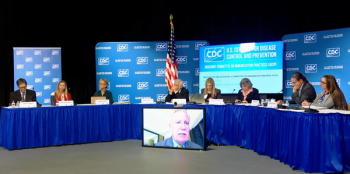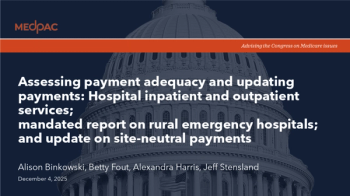The number of physicians participating in Medicare grew slightly from 585,642 in 2013 to 622,342 in 2023 — a 6.3% increase. According to a new JAMA research letter, exits from the Medicare program accelerated sharply during the COVID-19 pandemic, reaching a decade high in 2023.
Researchers analyzed 100% of Medicare fee-for-service claims data, covering 11.6 billion services provided by more than 960,000 unique physicians over the decade. They found that while participation increased overall, the proportion of physicians leaving Medicare increased nearly six times, from 0.84% in 2013 to 4.73% in 2023.
“Physicians who resided in a nonmetropolitan county had a higher likelihood of exit compared with physicians in a metropolitan county,” wrote authors Jonathan Cantor, Ph.D., Rose Kerber, M.P.P., Cheryl L. Damberg, Ph.D., of RAND Corporation, and Christopher M. Whaley, Ph.D., of Brown University.
Who’s leaving and why it matters
Related research:
More physicians are leaving traditional Medicare, with primary care hit hardest
A July Medical Economics article examined findings from a JAMA Health Forum study that tracked physician exits from traditional Medicare from 2010 to 2024. It found that the annual exit rate doubled over the period — from 1.8% to 3.6% — with primary care physicians and solo practitioners most affected by administrative and financial pressures.
The study found certain demographic and specialty trends among those exiting. Women physicians were 25% more likely to leave the Medicare program than men. Older physicians were also far more likely to exit — those aged 60 or older in 2013 were nearly six times more likely to leave than those under 30. Primary care physicians had a 12% higher likelihood of exiting compared with medical specialists.
Geography played a notable role. Physicians in rural (nonmetropolitan) counties and federally designated Health Professional Shortage Areas (HPSAs) were more likely to stop billing Medicare, raising concerns about access for patients and already struggling to find care. The share of physicians in nonmetropolitan areas fell from 52,911 to 44,507 between 2013 and 2023.
The authors warned that these patterns could exacerbate existing access gaps for older and rural Americans. “The increased likelihood of Medicare program exits will likely reduce access to care for already underserved communities,” they wrote. “As these patient populations already experience more limited access to care, these trends may be associated with adverse health outcomes.”
The COVID-19 pandemic
Physician exits spiked during and after the pandemic. The share of physicians leaving Medicare jumped from 2.54% in 2019 to 3.27% in 2020 and peaked at 4.73% in 2023. The findings aligned with previous studies showing widespread burnout and intent to leave medicine following the COVID-19 pandemic.
Self-reported burnout rates hit record highs in 2021, and employment data show lasting disruptions in physician work patterns.
The JAMA authors cited evidence that older physicians, women and those in primary care — groups already facing high administrative burden and lower pay — were disproportionately affected.
Broader context
The researchers noted that the analysis was limited to fee-for-service data and did not include Medicare Advantage, Medicaid or commercial plans. Some physicians who appeared to exit Medicare may have shifted to other settings, like Federally Qualified Health Centers (FQHCs) or rural clinics.
The study, supported by the National Institute on Aging and the RAND Center of Excellence on Health System Performance, underscores how even modest national participation gains can mask deeper cracks in the physician workforce.
















